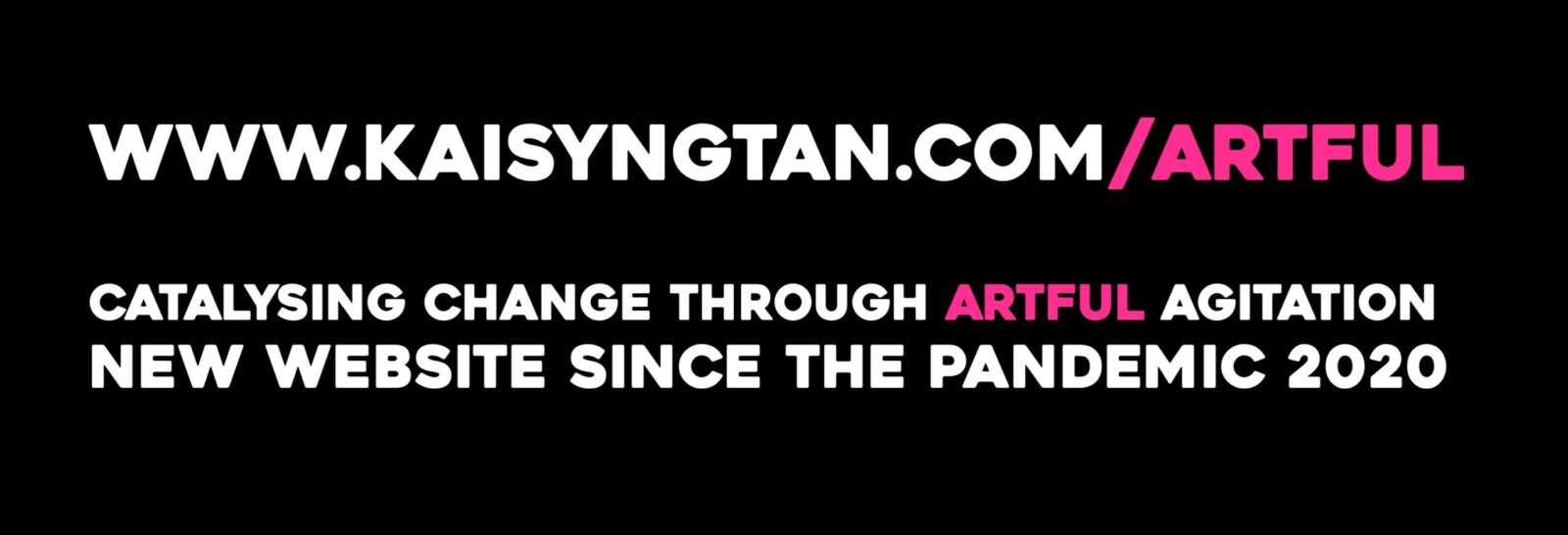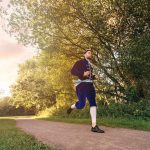Above: still from The Only Running Footman by James Steventon 2017
The RUN! RUN! RUN! Biennale #r3fest, which has been praised for its ‘positive atmosphere’ (Guardian 2014), will be in exile in Europe for its third run in 2018. For this Biennale, artist-curator Dr Kai Syng Tan will work with Dr Vybarr Cregan Reid, Reader in English and Environmental Humanities at the University of Kent and author of Footnotes and forthcoming Primate Change. Hosted by University of Kent’s Paris School of Arts and Culture (PSAC), this will take place as a workshop on 8 November. The theme is a timely and juicy Dangerous Movements.
Continuing some of the findings of the 2016 run and with special attention paid to the French context, we will work with postgraduate students to explore running as a metaphor and methodology, to think about how bodies (especially gendered, disabled and radicalised ones) are/aren’t able to move around in the world today (given May’s declaration of the end to free movement etc), against the backdrop of the anthropocene and how the human body adapts or fails to adapt to the changes around us. We will also unpack ‘movement’ in terms of artistic movements, touching on for instance the Situationists, the Flaneur/Flaneuse, as well as the essay format (Montaigne, Chris Marker and Agnes Varda). Details including on featured artists and academics will be announced soon soon soon, so watch this space.
RUN! RUN! RUN! BIENNALE
The RUN! RUN! RUN! Biennale is a bi-annual interdisciplinary programme that explores running as an arts and humanities discourse. It was founded in 2014 by Kai and geographer Professor Alan Latham (UCL) in 2014. If the first run, then emphatically named the RUN! RUN! RUN! International Festival of Running, was a celebratory survey, the second, held in 2016 and co-curated with artists Dr Carali McCall and Annie Grove-White in London, Cardiff and Leeds including in an indoor stadium, was its second, darker album, a sobering insight into borders, gender, ageing, power and the body, set against the backdrop of the sudden, shocking turn of events over Summer 2016.
‘PRODUCTIVE ANTAGONISMS’
A key feature of RUN! RUN! RUN! is how it unapologetically engineers unexpected spaces of creative collisions and ‘productive antagonisms’ (Latham and Tan 2016) between and across disciplines, formats, hierarchies and differences. For the 2014 run for instance we had lectures (such as by keynote speaker, Chair of cultural geography from the University of Glasgow Professor Hayden Lorimer) ‘intercut’ with 8-minute speaking slots (which we timed with a stopwatch), object-based learning activities (UCL’s paleoanthropology researchers brought samples illustrating anatomical parts for participants to handle) alongside academic posters (such as by a Loughborough University biomechanics PhD researcher) and new artworks (such as by Jo Volley, award-winning painter and Slade School Senior Lecturer); senior academics (including the then UCL Vice-Dean for Research in the Faculty of Social and Historical Sciences Professor Anson Mackay in charge of live tweeting) intermingling with emerging artists (including a 22-year-old theatre undergraduate) and science was set up against spirituality: a meditation session conducted by a representative from the Sri Chimnoy Centre was programmed at the same time with a lecture on injury prevention by UCH clinician Dr Courtney Kipps, who is also the Medical Director of the London Triathlon and London Marathon.
QUESTIONS
- What are the creative and critical possibilities arising from the examination of running as an arts and humanities discourse?
- What happens when artists and academics from different disciplines who use running ‘run into’ one another?
- In what ways could art (and art using running) open up potential spaces to create ‘productive antagonisms’ across disciplines? What could such an ‘iIl-disciplined’ form of interdisciplinarity teach us?
COLLABORATORS
Collaborators over the years have included artists, academics, friends from the third sector, runners and non-runners including:
- Stephanie Case (UN Human Rights lawyer, ultramarathon runner and founder of FreetoRun, which empowers women and girls in conflict areas with running),
- Eddie Ladd (Cardiff-based international performance artist),
- A Mile In Her Shoes (running charity for homeless women),
- Hackney Tours (acclaimed alternative walking and running tours of London led by Simon Cole),
- Dr Doug Sandle (BA. Phd. CPsychol. AFBPsS, retired psychologist who was still running at the age 74 in 2016),
- Dr Lisa Stansbie (artist and Dean of School of Art, Architecture & Design, Leeds Beckett Universitry),
- James Steventon (artist, Director of Fermynwoods Contemporary Art and collaborator since 2014),
- Dr Andrew Filmer (theatre academic at University of Aberystwyth who has used running in teaching for many years),
- Professor Karen Throsby (ultra swimmer of School of Sociology and Social Policy, University of Leeds) and
- Sarah Brown, Principal Keeper, Leeds Art Gallery.
CLICK ON THE FOLLOWING FOR MORE MORE MORE:
- visit the Website (2016)
- read this article published on Cultural Geographies (Sage, 2015)
- read this article published on Sport in Society: Cultures, Commerce, Media, Politics (Taylor and Francis 2016),
- read this review of the 2014 run by Dr Alex Lockwood in the Guardian Running Blog
- read this review of the 2016 run by Dr David Hindley
- read this review of the 2014 run also by the wonderful David

